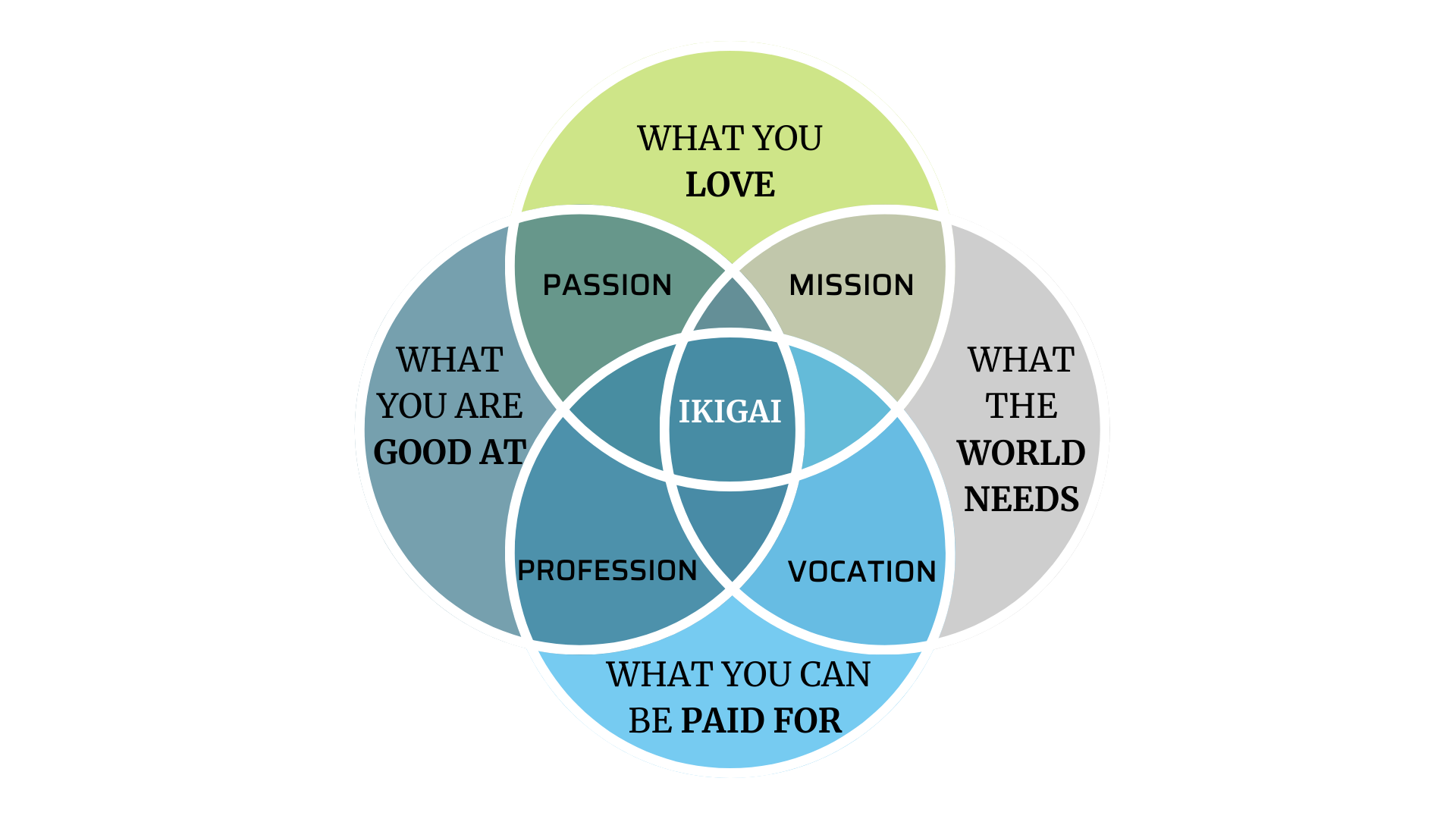Successfully Find Your Brand Voice by Applying Your Ikigai
A brand voice is one of the most important elements your business should have nailed down and more importantly, communicated effectively to your customers.
You aren’t alone in the struggle to find where your business’s brand voice fits in online. You know your company better than anyone and the value that it holds, but do enough people feel that value each time you post?
Without a consistent brand voice consumers can be left unsure of how to describe your company as anything other than your logo. Finding your brand voice will bring consistency and distinguishable attributes to every piece of content you put online.
Wouldn’t it be nice if there were something that could drive every decision your brand makes that viewers will appreciate?
Enter Ikigai.
What is Ikigai?
Consisting of 'Iki' (to live) and 'gai' (reason) the Japanese concept Ikigai roughly translates to a “reason for being.” The philosophy refers to having a direction or purpose in life which leads to satisfaction and a sense of meaning. Your product or service isn’t yours or your client’s reason for being, but instead the solution it provides is a component to the satisfaction. This is an opportunity to think deeper about your business than ever before.
When you combine what you love with what the world needs, you will find your mission. When you get paid for a solution to what the world needs you to find your vocation. When you get paid for something you’re good at, you have found your profession. Finding out you’re good at what you love reveals your passion. Putting together your passion, mission, profession, and vocation is the key to your reason for being.

What to do:
There is no wrong way to record this information. You can write them out on a notepad, plug them into a document on your computer, or even record voice memos. We recommend finding a whiteboard or a wall in your home to cover with sticky notes. Writing each answer down on a sticky note and placing it on a larger canvas allows you to study everything at once.
Answer the following questions.
- What do you love? This isn’t just what do you love now, but what did you love as a kid? Write down everything that brings you joy. *Be sure to think abstractly and include the things that your business loves. (Not sales).
- What are you good at? Don’t discourage yourself here. This isn’t a list of only things you’re a thought leader in, but a list of things you believe you’re good at and what other people compliment you on.
- What can you be paid for? This might not be as easy as you think! Include everything that you can be paid for, not what you currently get paid for. Don’t include things you don’t know about though.
- What do you think the world needs? This involves your opinion of what is missing from the world that would make it better and looking out into the world for the answers that they are desperately expressing to you.
- For extra business insight, you can also make a list of what your Industry needs within the world.
Now, find where these ideals overlap. Take time to think about it deeply and decide what your Ikigai is.
Bonus Tip: You can also reverse engineer this exercise by putting your company brand at the center of the Venn diagram at the start and see if there is an area in which your business is falling short of creating a sense of meaning.
Conclusion:
Consumers have realized the power they hold with their spending ability and are shifting from mass convenience to experienced based consumption. A major part of “experiencing” a brand, is being able to see its goals and the reasons why it is selling their product. Buyers of 2020 see purchases as not just buying a product but cosigning to the principles of the company behind the product. When your brand lives its Ikigai in every post, viewers will better connect with your brand and share that experience with others.
Want to dive deeper? For a video example of how to do this personally you can watch this session by Chris Do from The Future or read one of the many books on Ikigai (order from a local book store of course).
Tells us what your Ikigai is on Instagram @trailblaze.marketing.







